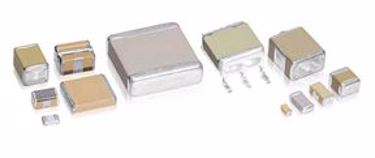Simplify Capacitor Dielectric Selection By Understanding Dielectric Coding Methods

When designing a ceramic capacitor, the type of dielectric used will influence the characteristics of the capacitor and define its electrical behavior. At a high level, there are two types of dielectrics made with ceramics – paraelectric and ferroelectric. Dielectrics containing paraelectric (or non-ferroelectric) ceramics are known as Class I dielectrics. These dielectrics show a linear relationship of polarization to voltage and are formulated to have a linear temperature coefficient. Capacitors using a Class I dielectric have high stability across various temperatures, but have low permittivity, which means the capacitor will offer low capacitance.
Dielectrics that contain ferroelectric ceramics are known as Class II dielectrics. These dielectrics provide a much higher permittivity, but the capacitance value is much less consistent over the temperature range. Class II dielectrics offer much higher dielectric constants than Class I dielectrics, but have less stable properties with regards to temperature, voltage, frequency, and time.
Get unlimited access to:
Enter your credentials below to log in. Not yet a member of RF Globalnet? Subscribe today.
